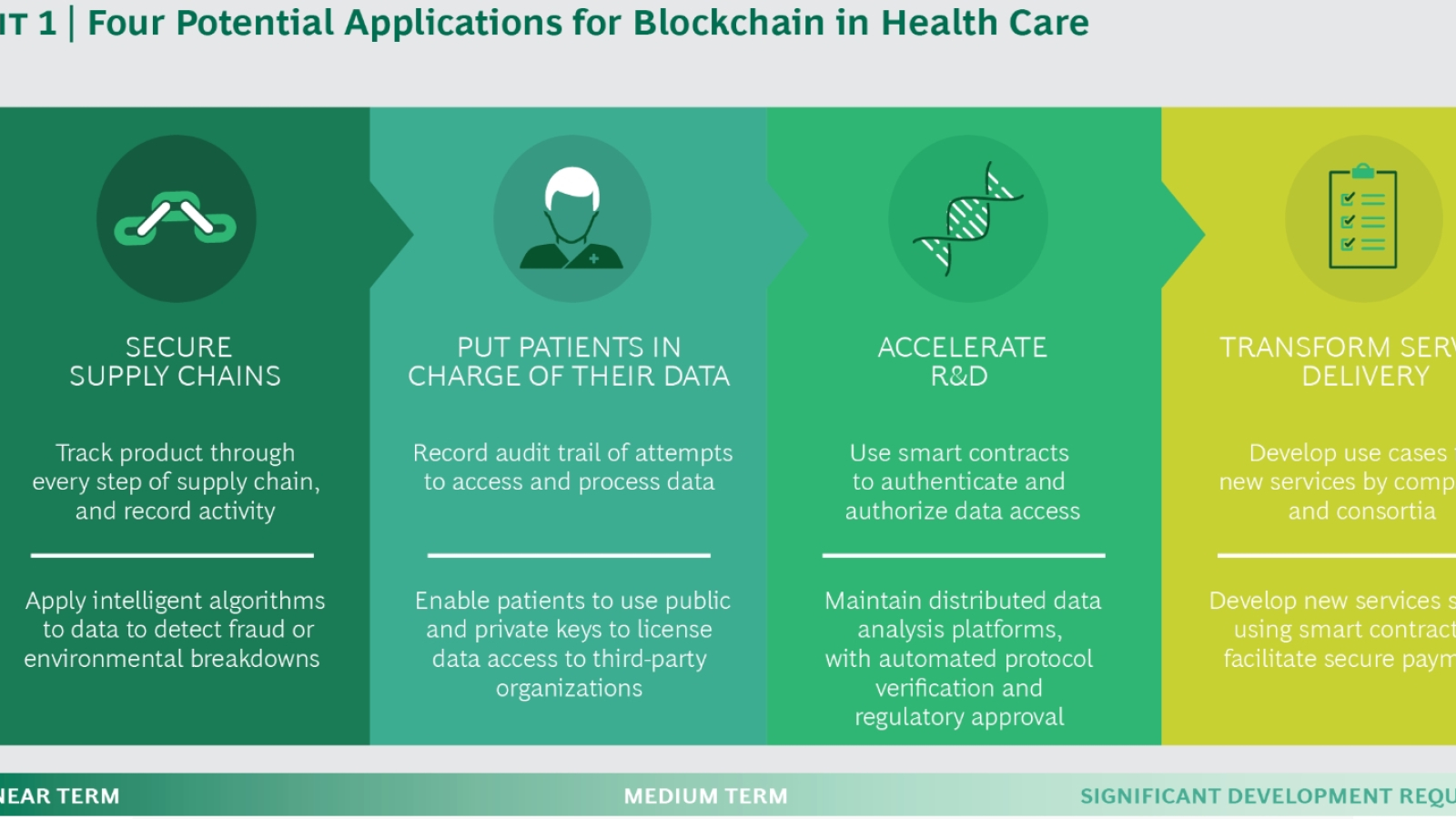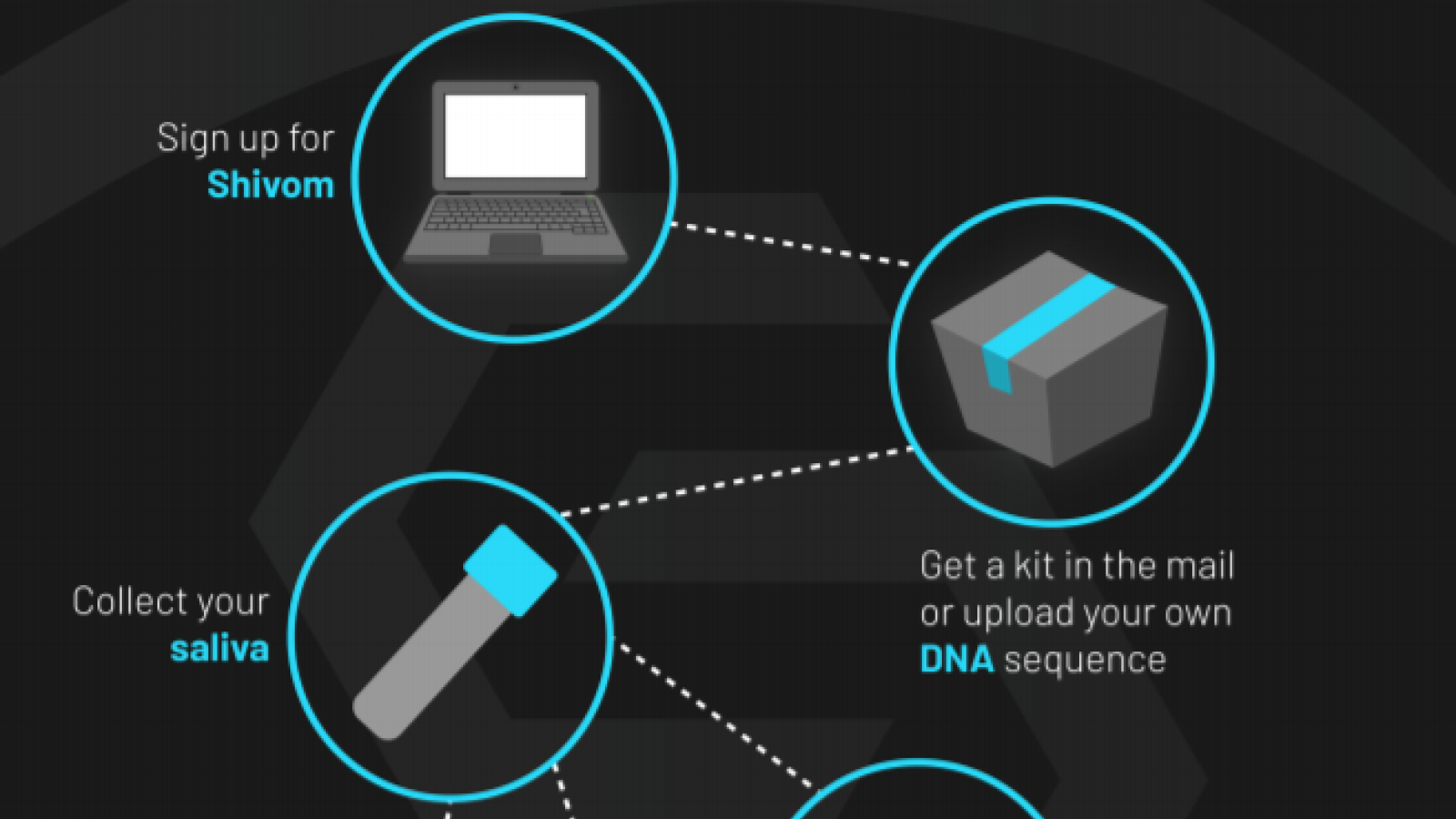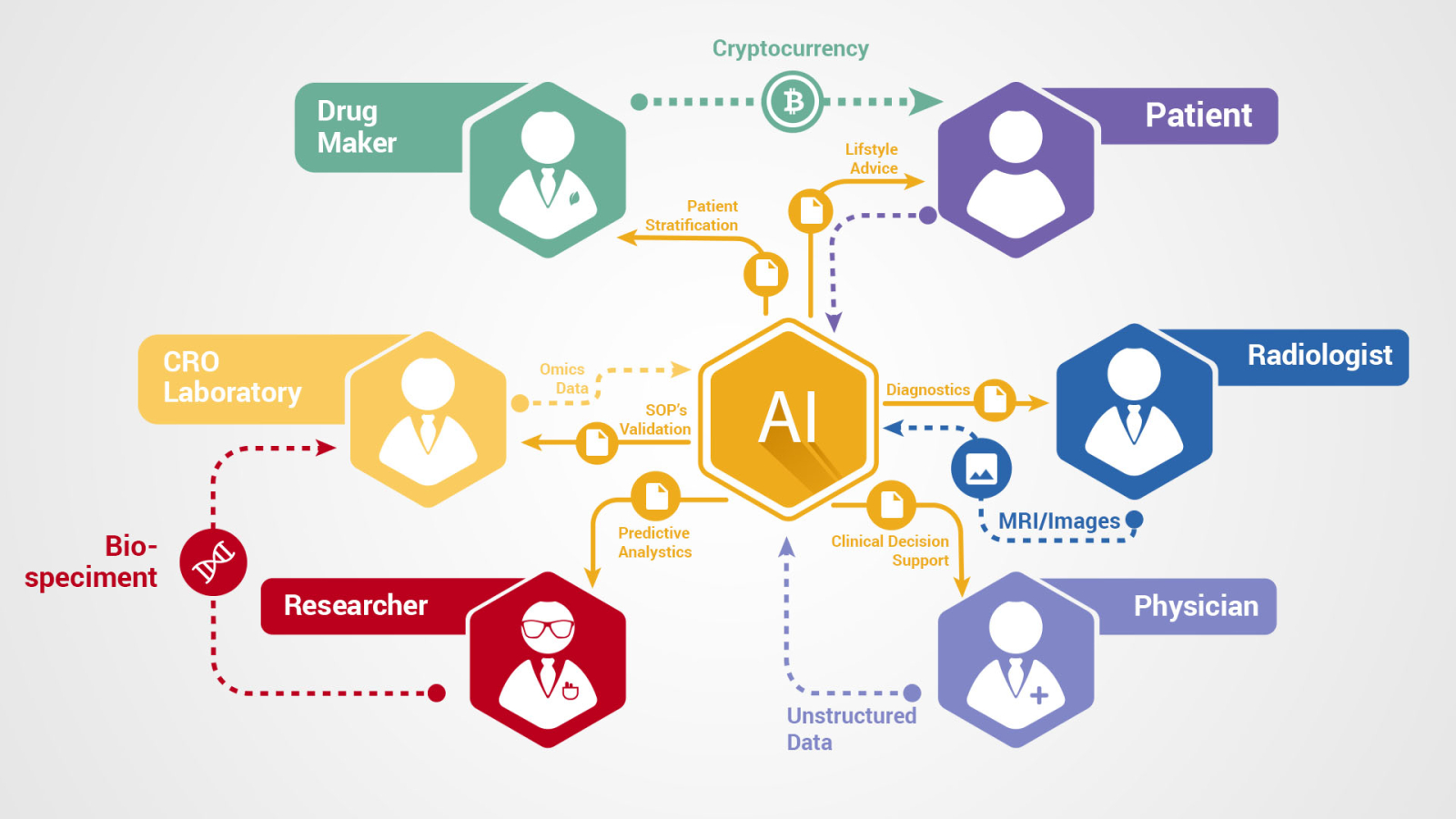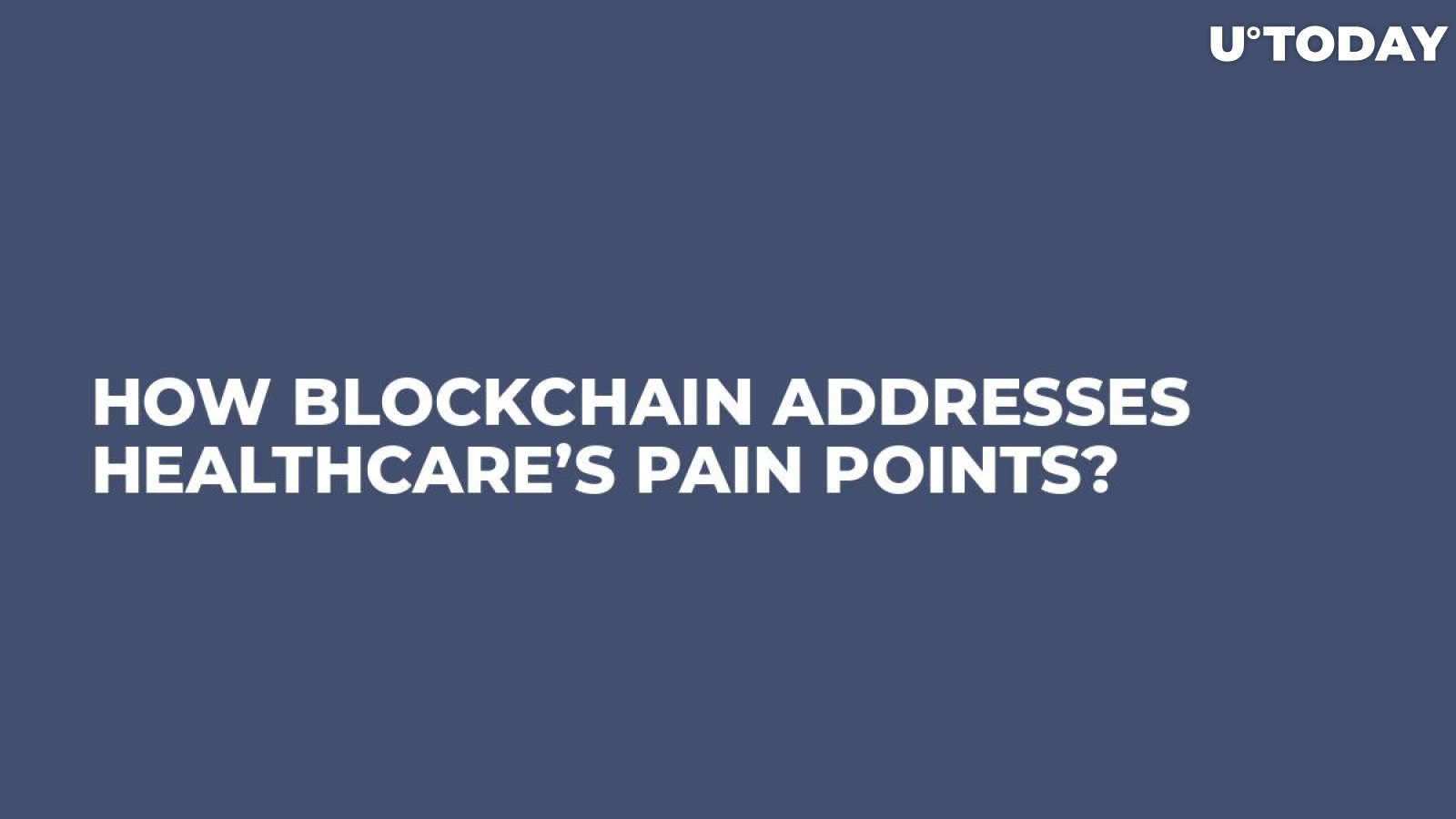Since the introduction of the blockchain, the digital world started changing irreversibly: it revolutionized the way we handle information and perform transactions. Blockchain provides umpteen possibilities, not only for crypto trading and financial world. Other companies can reap benefits from it, too, and healthcare organizations don’t stay on the sideline. Let’s find out how blockchain and smart contracts help healthcare companies address shortfalls and discuss a few cases in point.
Healthcare is in dire need of innovation
A perfect healthcare system is the one that sustains a decent level of medical support and provides timely help on a 24/7 basis. Whether we like it or not, there’s a myriad of regulations and legal issues that make the process time-consuming and complicated. There are lots of weak sides and gaps to pinpoint:
-
Important patient data is scattered over many systems and documents. Some of the information gets lost irreversibly.
-
Healthcare research results stay unreported, and the records are full of errors and misleading data.
-
Organizations communicate in an old, outdated way. When it comes to information exchange, the process is too long.
-
The problem of counterfeit medication production is still acute.
It goes without mentioning the financial aspect: both services and education in the sphere of healthcare are far from being widely affordable. The quality of service in private medical centers and governmental organizations is different, but residents of some countries don’t have any choice at all.
Therefore, a powerful, innovative solution is required to slog through the bureaucratic hurdles and turn the tables in favor of patients. The blockchain is the way to ensure the integrity of data exchange by storing information in encrypted algorithms and offering real-time sharing.
Focus on the information
John Halamka, Chief Information Officer of Beth Israel Deaconess Medical Center in Boston, expresses his position the following way:
“Just using blockchain in healthcare because it's cool does not make sense. In 2017, I worked on several production blockchain applications, so I have a sense what works and what does not. The blockchain is not meant for storage of large data sets. The blockchain is not an analytics platform. Blockchain has very slow transactional performance. However, as a tamperproof public ledger, blockchain is ideal for proof of work. The blockchain is highly resilient.”
With these points in mind, organizations should consider using blockchain for:
-
Storage of medical records. As soon as the patient’s personal medical history is generated and signed, it can be sent to blockchain that ensures total security and integrity of data. The same is applied to the results of medical trials and research. This is a mission-critical opportunity in cases when the integrity of medical record matters.
-
Consent management. In the current healthcare system, every state has its own regulations of privacy and consent. Blockchain can serve to record the patient consent and share data. It allows every party to check the blockchain permissions for accessing medical data.
-
Collection of information. The idea of rewarding patients for sharing data appeals to both sides. It is already implemented in a few projects — we will discuss them a bit later. Such approach brings mutual benefits: companies get enough data for research and trials, and people contribute to healthcare for some perks or financial compensation. They are sure that the data won’t get into wrong hands.
Therefore, blockchain technology changes the way of collecting and handling patient health information (PHI). It can be beneficial at a personal level, too: IoT devices, such as smart bracelets, can collect metrics and store it in a distributed ledger.

Real life blockchain application: 5 Interesting projects
How is theory translated into practice? Let’s review a few projects that leverage blockchain successfully.
1. Shivom
This project is designed for the collection and storage of genetic data. Shivom has become one of the first blockchain-based solutions for medical corporations and scientists. How does it work? The users registering in Shivom system are encouraged to share their genetic information: they send biological material to the organization and get rewarded by the Omx token. The information about genomes is sequenced and stored in a database. Shivom guarantees total safety of personal data.
At the same time, the platform serves as a marketplace for organizations in need of medical data: drugstores, governments, research groups, universities, etc.
The information obtained via Shivom can be used for:
-
clinical research;
-
drug development;
-
precise identification of diseases;
-
prognosis of disease;
-
personal treatment.
Aside from financial reward, a user gets another perk: their genetic information can be used for diagnostics, prognosis, and disease treatment. With detailed genetic information at their fingertips, medical workers can develop an individual treatment plan and predict the reaction of the body to certain medications.

What is the role of blockchain? It will eliminate the problem of trust, ensure data integrity and correctness, and solve the issue of patients’ consent, ownership of information, and authentication. Users contributing their personal medical data are given the private keys in order for the information to stay encrypted. They are free to choose who can access their data.
2. Doc.AI
This project was launched in 2016 by entrepreneurs Walter and Sam De Brouwer. The main idea behind Doc.AI is the visualization of a patient’s health future. Sound too complicated? This is how it works in layman’s terms:
-
You collect medical data (genome, microbiome, etc), and send it to Doc.AI
-
A team of data scientists analyzes the data and makes some predictive models.
-
You get an insight into the data and can bring the information to the doctor.
For scientists, your data is essential to research fuel, for you — it’s a chance to get a professional opinion and go through the ‘troubleshooting’ process. Probably, scientists can predict health problems you didn’t suspect to have.
At the moment, any user is free to launch a data trial. The blockchain will guarantee the safety of their information and integrity of research results. Doc.AI is a good example of AI, blockchain technologies, and community working together for the sake of humanity.

3. Iryo
There’s nothing more irritating than coming to a hospital to find out your medical records have been lost. Blockchain eliminates such risks, and Iryo is one of the projects that make steps towards integrity and the safekeeping of medical information.
The Slovenia-based enterprise is developing an open-source OpenEHR platform with a zero-knowledge data repository. It ensures the safety of medical data and prevents breaches and hacking. Thus, instead of having their medical information stored in different sources, patients can keep all records on Iryo facilities. The project can be evaluated by people from all over the world, but first the testing takes place in Slovenia.
4. Gem
This is another solution for medical data handling. Gem was established in Venice Beach, California, four years ago and is aimed to connect the data sets in a blockchain-based platform called GemOS. The creators strive to make healthcare more patient-oriented and facilitate data management.
Gem partnered with Tieto and Philips — a European health service provider — and the US Center for Disease Control and Prevention. The latter works on population health data management. For Tieto, Gem helps connect data from Finnish blood banks and DNA registers.

5. Medicalchain
This is an English company that’s developing a blockchain-based project for storing health records and sharing them with all related parties — doctors, laboratories, hospitals, pharmacists. Of course, it’s done after a patient’s permission only. In the nearest future, Medicalchain will also introduce telemedicine: it will help patients communicate with doctors online. Now people won’t have to meet doctors directly. In addition, third-party developers would be able to create applications on the basis of Medicalchain’s system. That means there will be the whole chain of digital solutions making our lives simpler.
In March 2018, Medicalchain started a partnership with the Groves Medical group, an organization that counts over 30,000 patients. Groves decided to be among the first to try the technology and accept cryptocurrency as payment for its services. Four of its medical centers will get access to the data stored in the blockchain.
The role of cryptocurrency
All of the above-mentioned projects implement their own tokens and blockchain. However, it doesn’t mean a healthcare initiative needs to build its own decentralized ledger to benefit from the technology. There’s a myriad of charity organizations that accept contributions in cryptocurrency to spend it on patients’ health, research, and education.
SENS
Can we stop aging? Several scientists sponsored by SENS project are working hard to address this issue. They develop medications and treatment for aging-related diseases. The fund accepts crypto donations in Bitcoin, Ethereum and Litecoin.
The SENS team performs research in its own laboratory in California. Aside from that, it organizes annual conferences and seminars, publishes scientific articles, news and reports. SENS partners with American institutes and has already managed to tackle a lot of problems, including:
-
Cardiovascular and eye diseases;
-
Genetic changes and their influence on the body;
-
Cell aging.
Donations help researchers to rent laboratories and equipment in advanced universities. Beside, SENS gives education grants for outstanding students. Its funds are also spent to organize scientific meet-ups and conferences. Probably, SENS’ efforts will take us one step closer to immortality.
Medic Mobile
This project is sponsored by BitGive, one of the largest charity organizations that accept crypto. Medic Mobile provides medical education to those who cannot access it because of poverty and low quality of life, e.g. to people in Latin America, Africa, and some Asian countries. In the first quarter of 2018, Medic Mobile helped almost 20,000 people from 23 countries to get a medical education.

The organization educated in different spheres putting the focus on family planning, children’s health, and disease treatment. Thus, the organization raises the quality of medical help in regions where it’s crucial. Medic Mobile teaches both theory and practice: students master different medical instruments and get experience. Moreover, the organization carries research and publishes scientific works.
What about exchanges?
The crypto exchanges will be involved in the process of blockchain adoption, too. Successful healthcare ICO will make it to the exchange market to present their tokens. At the moment, the following coins can be traded:
-
Dentacoin (DCN);
-
Medibloc (MEDX);
-
Medicalchain (MTN);
-
Lympo (LMY);
-
FarmaTrust (FTT);
-
AIDOC (NRN);
-
Shivom (OMX);
-
Docademic (MTC);
-
Patientory (PTOY).
All of those tokens are of ERC-20 type.
Blockchain opportunities in healthcare
Evidently, the use cases of blockchain are endless, but what exactly are the benefits to be reaped?
|
Data integrity and security |
The healthcare system is full of middlemen and bureaucratic procedures. Employment of blockchain allows exchanging data in a more transparent, secure manner. There’s always the risk of mistakes, while blockchain is tamper-proof and eliminates the threat of human errors. It also applies to research: blockchain ensures the reliability of information. |
|
Safety of medications and drugs |
Thanks to the new technology, the pharmaceutical supply chain can be protected against manufacturers of counterfeit production. Blockchain can be applied to control the process of drug development due to smart contracts and real-time recording. Thus, the process of drug production and distribution can be tracked by authorized parties and patients. |
|
Easy access to medical records |
Distributed ledgers can store medical history. Patients are free to access their information and provide access to it for third parties, such as doctors, hospitals and insurance providers. The blocks of information stay safe and secure. |
|
Removal of third parties |
Blockchain enhances payments without the involvement of third parties for billing management. All financial data is trackable. |
|
Unique identifier for every patient |
The distributed ledger gathers all patient’s data together and matches both IDs for the patient and IDs for the health records systems. Therefore, it can serve to store medical records, contacts, genetic and biometric data. |
Thus, the technology renders advantages at all levels of the healthcare system - from individual (seamless experience for every patient) to corporate (patient data management, research).
Cybersecurity in healthcare
According to a report published by Deloitte, there were 112 million technological breaches in health record data in the year 2015. In 2016, over 27 million patients were affected by hackers. 43% of those breaches were initiated by insiders, and 27% happened because of ransomware and hacking. The number of connected health devices is growing, and it will be harder for the Health IT infrastructure and architecture to support the evolving IoMT (Internet of Medical Things) ecosystems.
By 2020, the global number of IoT connected devices is expected to reach 20-30 bln. Blockchain technology can help to bridge the existing gaps and enable device data interoperability while sustaining privacy and reliability. Such companies as Telstra (user biometrics and smart homes), IBM (cognitive Internet of Things) and Tierion (industrial medical device preventive maintenance) are making research on those use cases to introduce blockchain in IoT devices efficiently.
What should companies do?
It’s clear that blockchain technology cannot be integrated into healthcare in a day, but being among the first companies to leverage it won’t hurt. Therefore, companies from the sector should prepare for serious technical innovations.
At the moment, preparation involves:
-
learning about blockchain;
-
considering potential applications and use cases;
-
building initial capabilities;
-
collecting funds for upgrades.
The exact steps depend on the industry.
Pharma
Pharmaceutical companies are most likely to experience the influence of blockchain. They will realize the value of technology when it helps eliminate counterfeiters, validate product quality, improve the speed and performance of operations. Companies should determine how exactly the capabilities should be acquired — through the in-house technologies, a partnership with startups, or buying capabilities them as a service.
At the moment, they can start experimenting with off-the-shelf solutions and consider partnership with startups to develop their specific applications.
Medtech
Medtech developers should put a heavy focus on combining blockchain with the IoT. They need to explore how the blockchain can secure data transaction among numerous connected devices, for example, pacemakers, insulin pumps, and sleep apnea equipment. That will enhance more efficient management of patient information. Probably, a broader ecosystem should be established around connected devices (patient, health service provider, medtech supplier).
Health service providers and payers
Here, a lot of regulations and legislation issues should be addressed. At the moment, there are a lot of constraints that hurdle the efficiency of health care. For example, some countries don’t allow for the assimilation of patient data from different sources. To sharpen their competitive edge, healthcare providers need to boost their strength in such spheres as network management, medical management, and support functions.
Both providers and payers are the most influential players in the healthcare niche. They have a chance to implement blockchain by addressing technology governance issues, participating in cross-industry dialogue, and encouraging their clients to include blockchain-enabled privacy controls in their applications. Payers, in their turn, can promote new formats of service provision. For example, the above-mentioned Gem project plans to link the hospital records with the data obtained from other sources, such as wearables and employee wellness programs.

Blockchain isn’t a panacea
Despite glowing prospects, we’re unlikely to see blockchain used in healthcare on a habitual basis very soon. To set the ball rolling, the industry should overcome dramatic changes, and the question is: “Are healthcare organizations ready?”
There are at least five factors that make blockchain implementation curve too steep:
-
Development is very slow and challenging. When it comes to creating blockchain algorithms, programmers should keep the data consistent across every single node, and even a tiny error can disrupt the entire database. Even worse: one bug can render different data to one node and others. Fixing bugs is very hard because all users should agree to any changes — all in all, blockchain isn’t under the control of a single entity.
-
Incentive structures are difficult to design. The rewards should be aligned with the network goals. All incentive issues should be solved right from the start. Otherwise, blockchain is worthless.
-
Maintenance can be expensive: while in the centralized model, tasks are performed only once, in blockchain they must run thousands of times. The same data is stored in multiple places rather than one source. The cost of transmission, verification, and storage are too high, because every database (out of tens, hundreds or even thousands) should be paid instead of one centralized database.
-
Risk of bad actors uploading wrong data. Since there’s no governing entity, blockchain can be entered by malicious users who can upload frivolous data or use the system for profit. Without strict rules for deterring bad behavior, the blockchain is doomed.
-
The existing infrastructure should be evolved, too. Every hospital and organizations have their own well-established methods of data storage, supply chain, and payment system. All upgrades should be somehow compatible with the current technologies used — matching them is quite hard.
Bottom Line
The healthcare industry in both developing and developed countries has a lot of vulnerabilities and breaches. The use of blockchain technology and smart contracts can eliminate the problems connected with data management and security making services more efficient and quick.
Imagine that you can have all of your medical data (medical history, genetic and biometric info, data from devices) stored in one place, accessed within a second from any hospital in the world. You can discuss your health with your doctor via Skype call and make purchases in pharmacy, being sure that it’s a 100% original product. Sound good? The future of blockchain can make this utopian reality true.
However, it’s unlikely for us to enjoy such convenience in any place of the world because the implementation of blockchain in anywhere except crypto trading requires a lot of time, effort, and investment. The number of enthusiasts and pioneers testing blockchain on their facilities should be way higher to see any positive shift.










